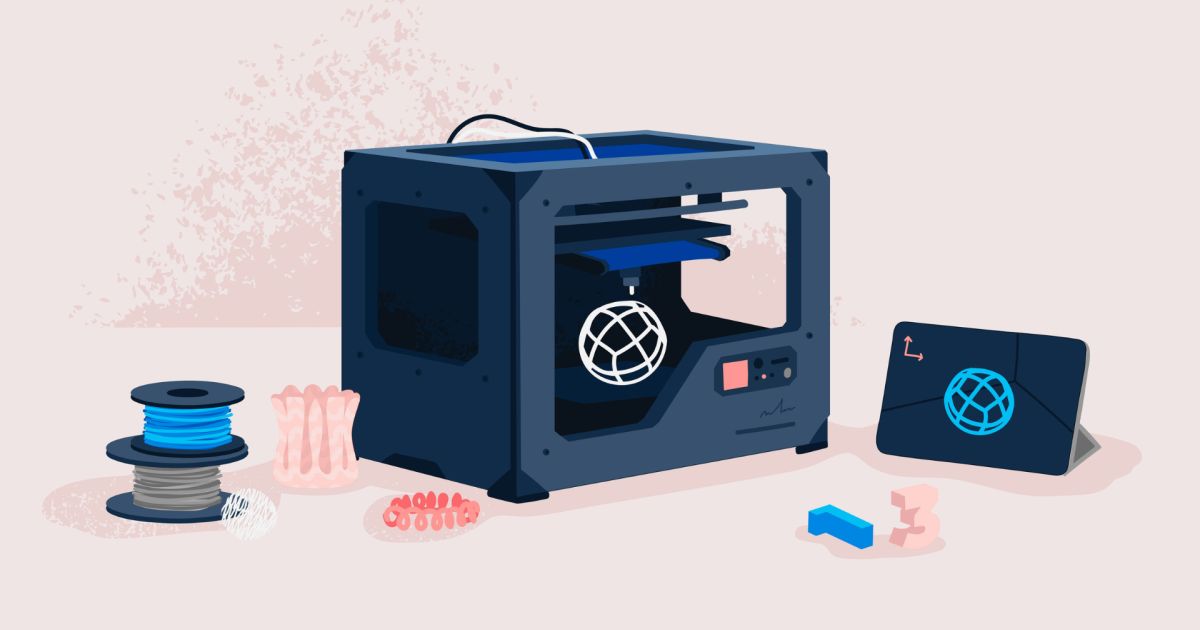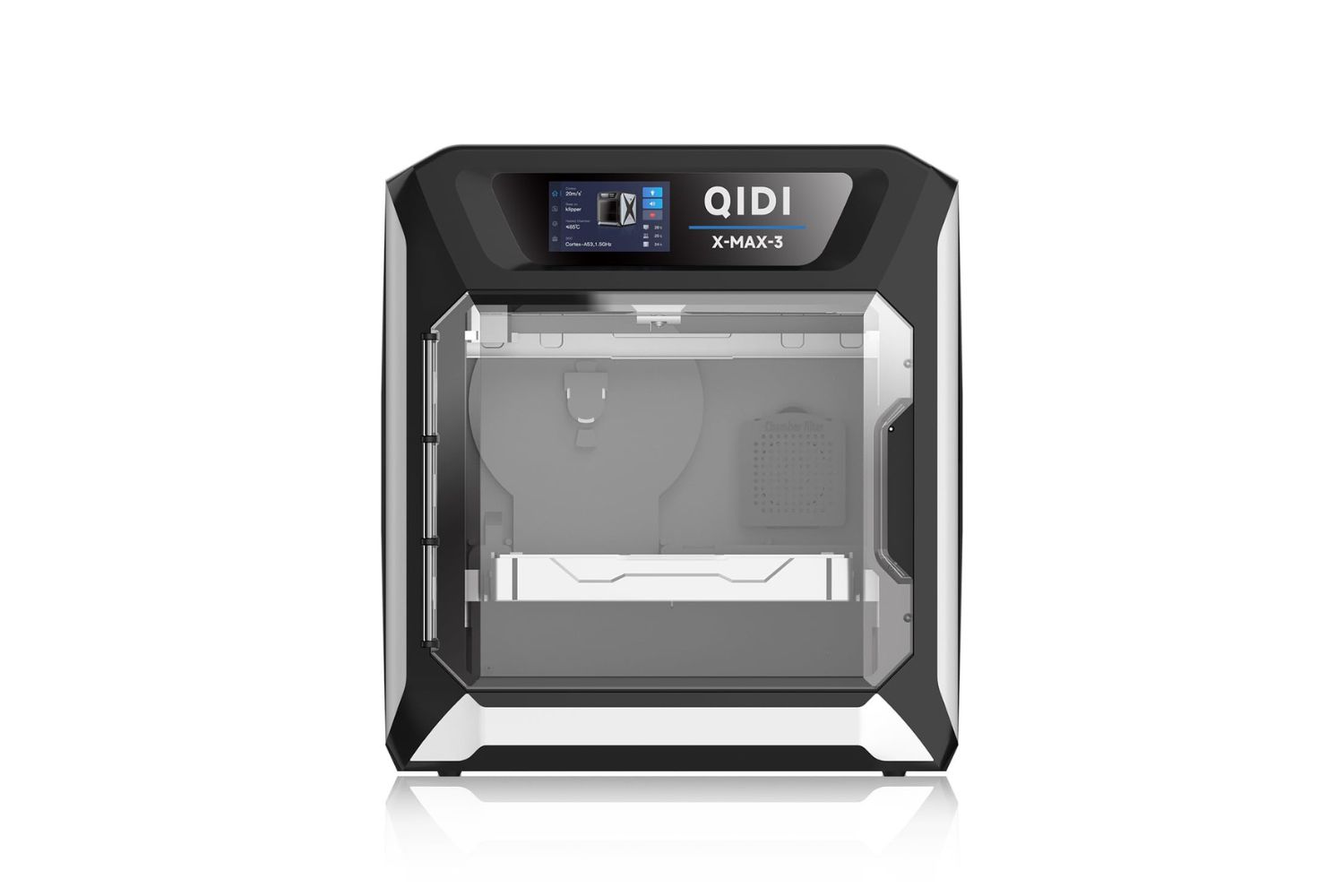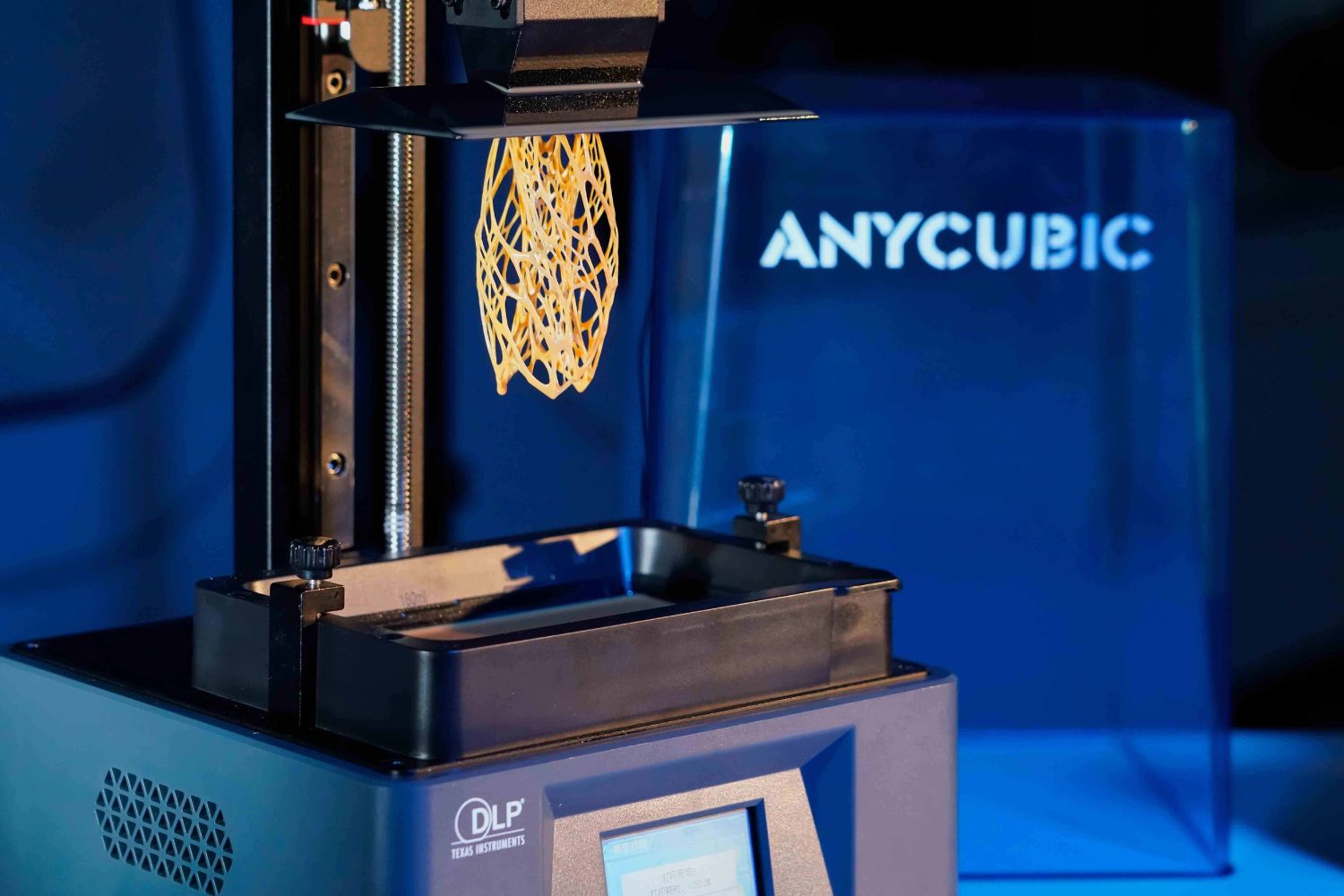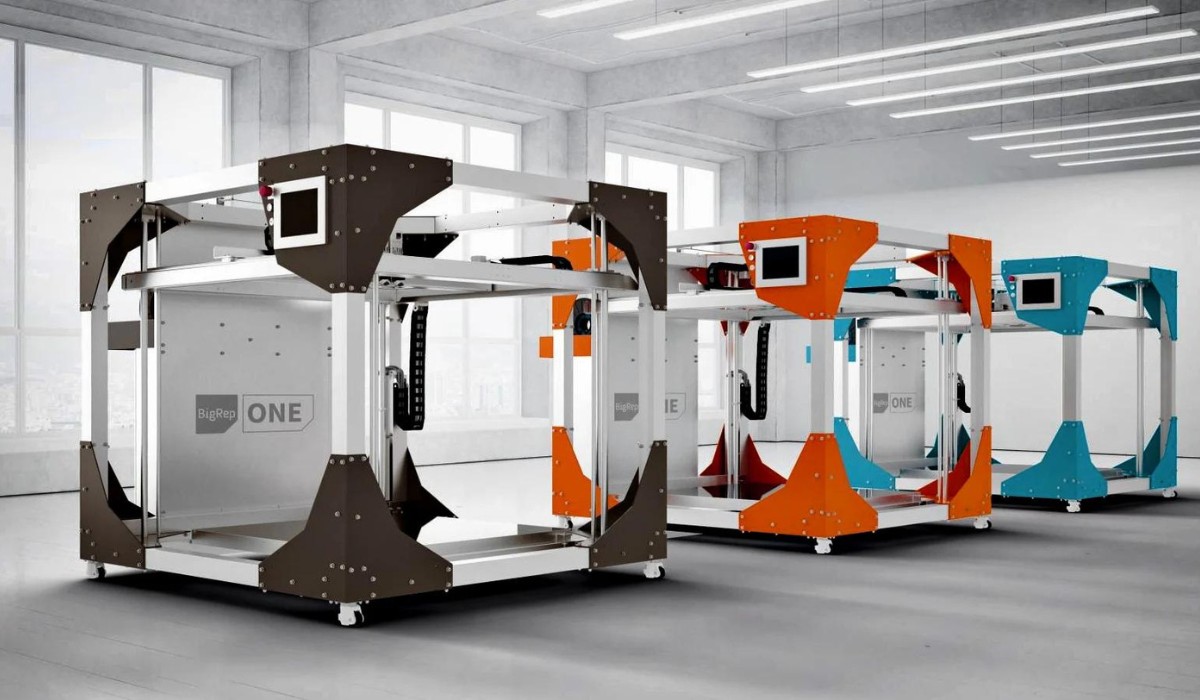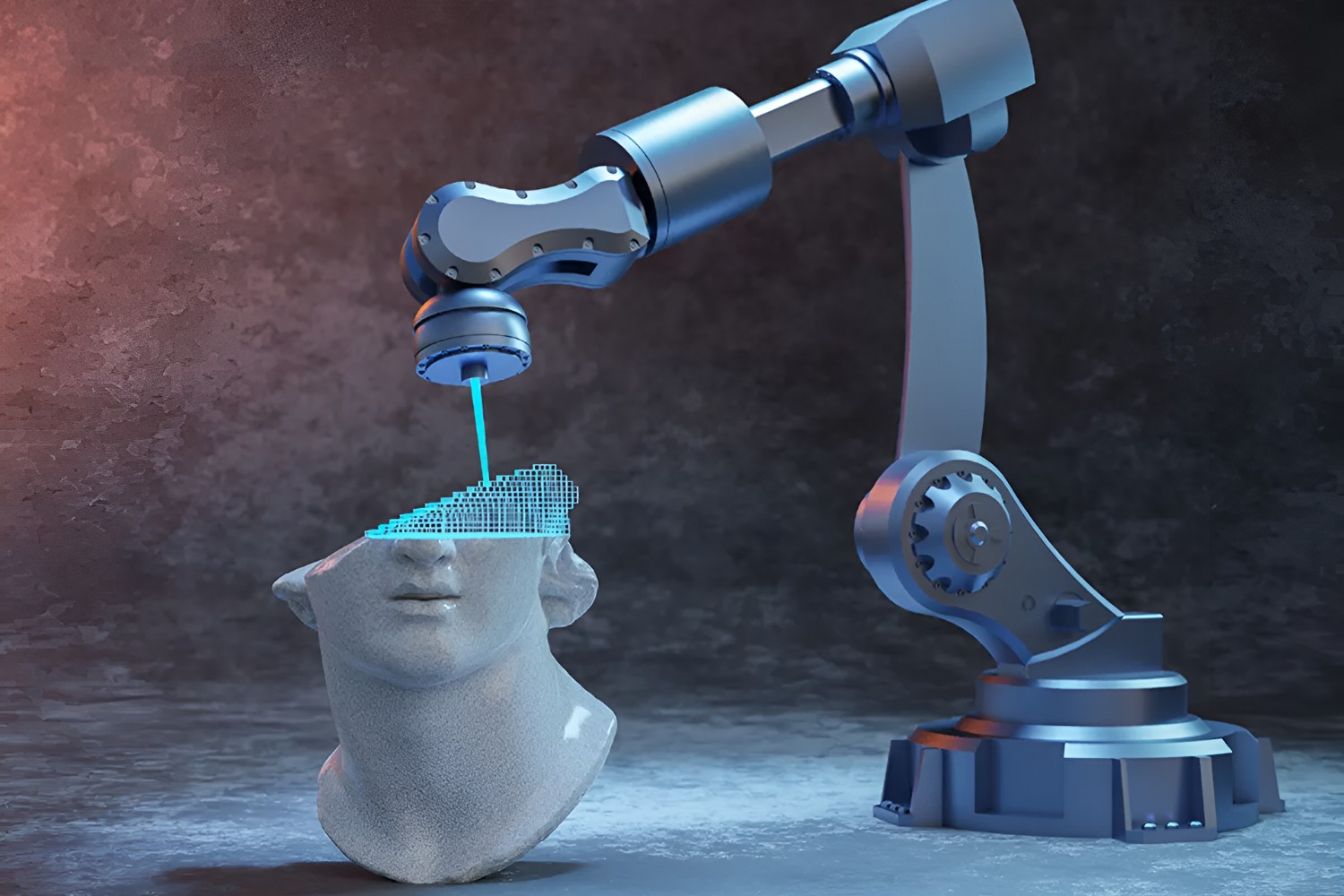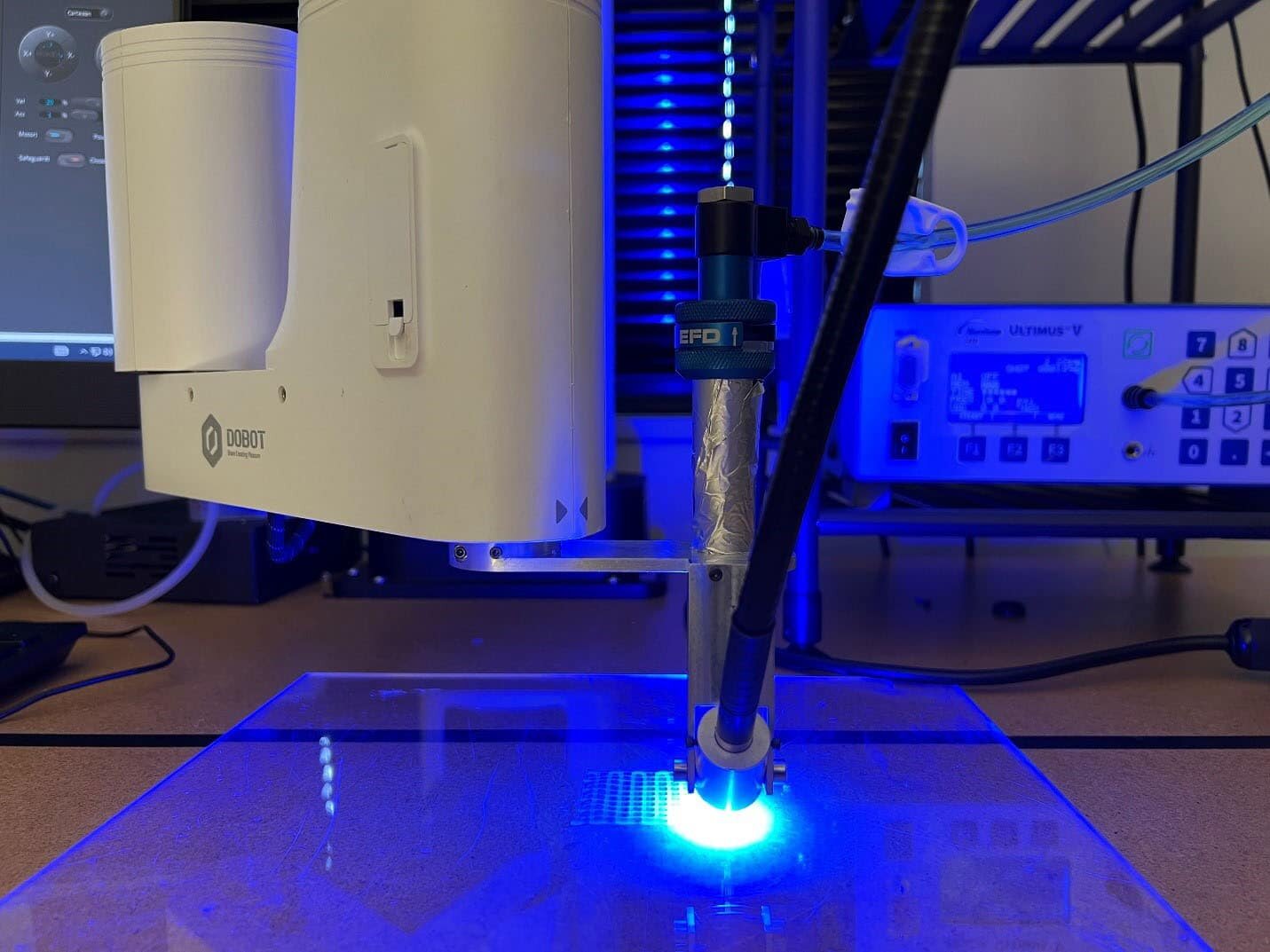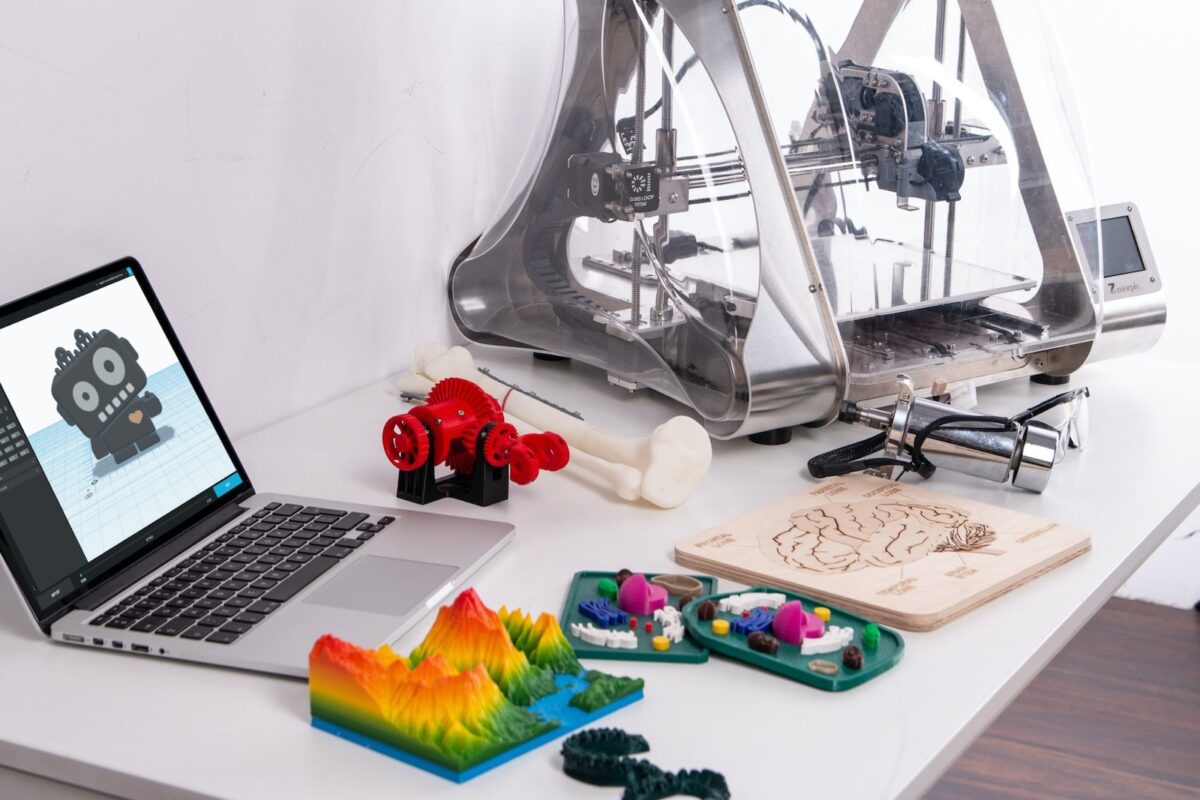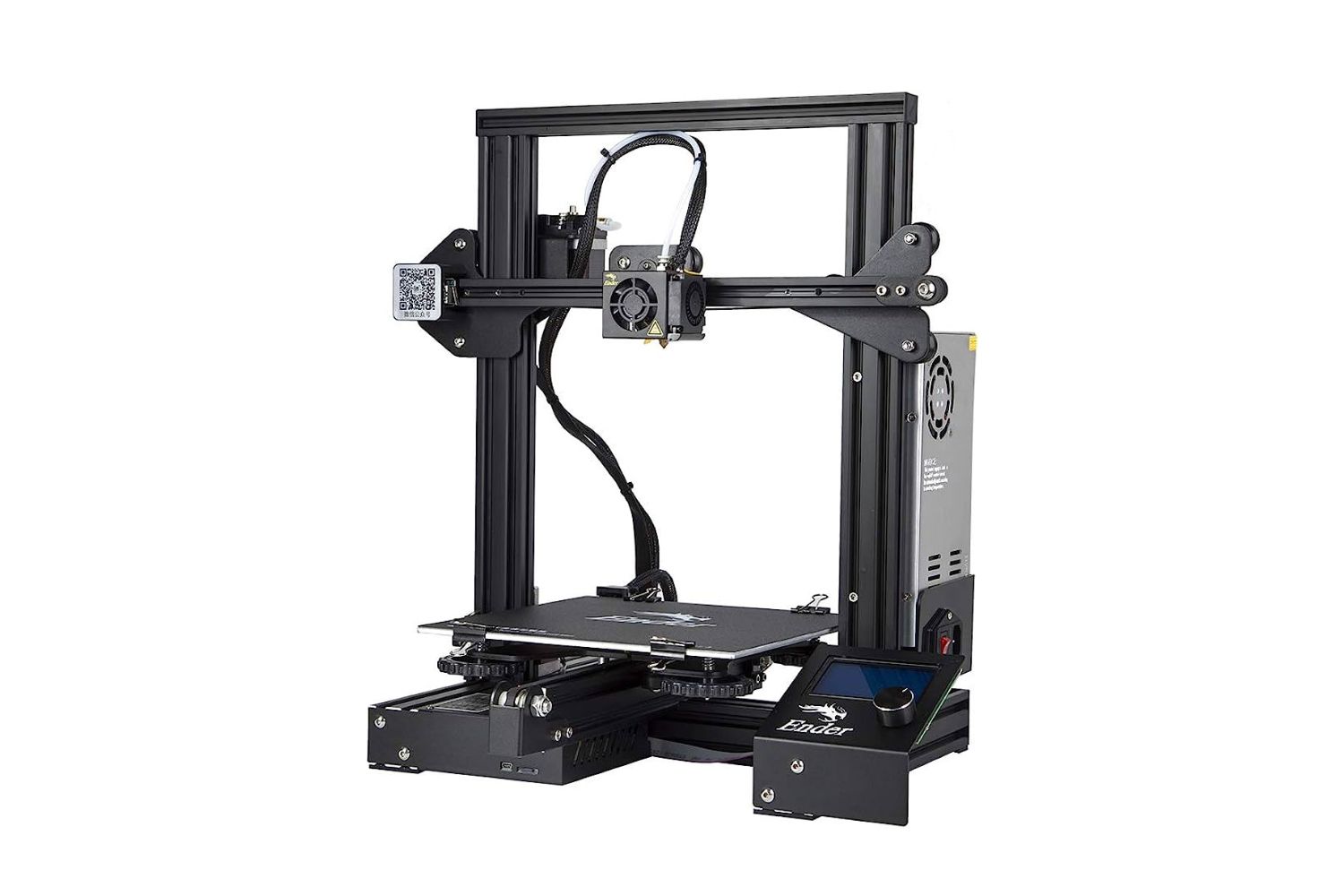Introduction
3D printing technology has revolutionized the way we create and manufacture objects. From intricate prototypes to personalized parts, the possibilities are endless. But one question that often arises is, how fast can a 3D printer print? In this article, we will explore the factors that influence printing speed, the different settings that can affect it, and provide real-world examples of fast 3D printers.
Printing speed refers to the rate at which a 3D printer can create an object. It is measured in millimeters per second (mm/s) or cubic centimeters per hour (cm³/hr). While faster printing speed is desirable, it is important to find a balance between speed and print quality. Printing too fast may result in lower resolution or weaker structures, whereas printing too slow may be time-consuming and inefficient.
Factors such as the complexity of the object, the material being used, and the printer’s capabilities all play a role in determining the printing speed. Large, complex objects may require more time to print accurately, while smaller and simpler designs can be produced faster. Additionally, different materials have different properties and may require specific settings to achieve optimal print speed.
Print speed settings can vary among different 3D printers, but generally, there are options to adjust the overall printing speed. These speed settings can be modified in the printer’s software or firmware. It is essential to refer to the printer’s documentation or consult the manufacturer’s guidelines to understand how to adjust these settings properly.
Estimating the print time is crucial, especially when working on time-sensitive projects. Many slicing software or printer management software provide an estimated print time based on the chosen settings. This estimation takes into account factors like layer height, infill density, and print speed. However, it is important to note that the estimated print time may not always be accurate, as unexpected issues during the printing process can occur.
Now, let’s take a look at some real-world examples of fast 3D printers. These printers are known for their impressive printing speeds, often achieving high-quality results in shorter timeframes. Understanding these examples can give us insights into the potential of fast 3D printing technology.
Factors that affect printing speed
Several factors can influence the speed at which a 3D printer operates. It’s crucial to consider these factors to optimize printing speed and achieve the desired results. Let’s delve into some of the key factors that can affect printing speed:
1. Layer height: The layer height is the thickness of each printed layer. Smaller layer heights provide greater detail but result in longer print times. Conversely, larger layer heights can speed up the printing process but may sacrifice print quality. Finding the right balance is essential.
2. Infill density: Infill density refers to the amount of material inside an object’s structure. Higher infill densities will result in stronger objects but may require more printing time. For faster prints, lower infill densities can be used, but the structural integrity may be compromised.
3. Print speed setting: As mentioned earlier, adjusting the print speed can significantly impact the overall printing time. It’s important to find the optimal speed that ensures both quality and efficiency. Higher print speeds may lead to decreased print quality, while slower speeds increase the time required to complete a print.
4. Print nozzle size: The size of the print nozzle determines the amount of material that can be extruded during each pass. Larger nozzle sizes allow for faster printing speeds, but finer details may be compromised. Smaller nozzle sizes result in slower prints but offer higher precision.
5. Print material: Different materials have varying properties and printing characteristics. Some materials may require slower print speeds to avoid issues like warping or stringing, while others may allow for faster printing without sacrificing quality. Understanding the specific requirements of the chosen material is essential for optimizing print speed.
6. Print complexity: The complexity and intricacy of the design can impact printing speed. Highly detailed or intricate models may require more time to print accurately, whereas simpler designs can be completed faster. It’s important to consider the level of detail required and adjust the printing speed accordingly.
7. Printer hardware and capabilities: The capabilities of the 3D printer itself play a significant role in determining printing speed. Factors such as the printer’s motor system, cooling mechanisms, and overall build quality can affect how efficiently the printer operates. Upgrading to a newer and more advanced printer can often result in faster printing speeds.
By considering these factors and fine-tuning the print settings, it’s possible to achieve optimal printing speed without compromising on print quality. Experimenting with different combinations and finding the right balance for each project will help maximize productivity and efficiency in 3D printing.
Print speed settings
Adjusting the print speed settings is a crucial aspect of optimizing 3D printing speed. These settings can be modified in the printer’s software or firmware, allowing users to customize the speed according to their specific needs. Let’s explore some of the key print speed settings and how they can affect the printing process:
1. Initial layer speed: The initial layer speed refers to the speed at which the printer lays down the first layer of the print. It is common to set a slower speed for the initial layer to ensure good adhesion to the build plate. Slowing down the initial layer speed allows for better bed adhesion and prevents warping or lifting of the print.
2. Outer shell speed: The outer shell speed determines the speed at which the printer builds the outer perimeter or shell of the object. This speed setting is crucial for achieving accurate dimensions and a smooth surface finish. Slower speeds for the outer shell can result in higher precision, while faster speeds may sacrifice some level of detail.
3. Inner shell speed: The inner shell speed relates to the speed at which the printer constructs the inner structure of the object. This setting is particularly relevant for models with multiple shells or infill patterns. Adjusting the inner shell speed can help balance the printing time while maintaining structural integrity and overall print quality.
4. Infill speed: Infill speed refers to the speed at which the printer fills the internal structure of the print with material. This setting can significantly impact the printing time, as infill typically constitutes a substantial portion of the print. Faster infill speeds can help reduce print time but may result in lower overall strength. Balancing infill speed with infill density is essential to achieve a well-structured and efficient print.
5. Travel speed: Travel speed refers to the speed at which the printer moves between different parts of the print without extruding material. Increasing travel speed can expedite the printing process, as it reduces the time spent on non-printing movements. However, excessively high travel speeds may generate vibrations or inaccuracies in the print. It’s important to find the optimal travel speed to maintain print quality while minimizing non-printing time.
6. Print cooling: Proper print cooling is crucial for achieving high-quality prints, especially in models with small or intricate details. Cooling settings control the fan speed or airflow that helps in solidifying the layers. Balancing cooling settings is essential to avoid warping, stringing, or other print imperfections, as excessive cooling can lead to poor layer adhesion and compromised print quality.
7. Acceleration and jerk settings: These settings determine how quickly the printer accelerates, decelerates, and changes direction. Adjusting acceleration and jerk settings can have a significant impact on printing speed without compromising the quality. Higher values may increase speed but may lead to inaccuracies or artifacts in the print. Fine-tuning these settings allows for a smoother and more controlled printing process.
It’s important to note that the optimal print speed settings may vary depending on the printer model, material used, and desired print quality. Experimenting with different speed configurations and iterations is key to finding the sweet spot for each specific project. By understanding and utilizing these print speed settings effectively, users can optimize their 3D printing processes and achieve faster and more efficient prints.
Print time estimation
Estimating the print time of a 3D model is crucial for planning and managing time-sensitive projects. While the actual printing time can vary based on several factors, there are methods to estimate the duration of a print. Let’s explore some of the ways to estimate print time:
1. Slicing software: Most 3D slicing software provides an estimated print time based on the chosen print settings. These software programs consider parameters such as layer height, print speed, infill density, and travel distance to calculate the approximate time required for the print. However, it is important to understand that the estimation provided by the slicing software is based on assumptions and may not always be accurate due to unforeseen variables during the print.
2. Previous print records: Keeping track of the print time for previous similar models can provide a rough estimation for future prints. By referring to a log or recording the print time for different models, one can get an idea of how long a similar design might take to print. However, it is crucial to remember that print times can vary based on different settings and factors, so this method should be used as a starting point rather than a precise estimate.
3. Printer management software: Some 3D printers come equipped with management software that provides real-time print status and estimated print time. These software programs monitor the printing process and use data from the printer’s sensors to calculate the estimated time remaining. This estimation takes into account factors like print speed, layer height, and other settings. While these estimates are generally more accurate, they can still be influenced by unforeseen printing issues.
4. Manual calculation: For experienced users, manual calculation can be an option to estimate print time. This method involves calculating the total number of layers and multiplying it by the average time taken to complete one layer. Additionally, considering factors like travel time and extruder movements can help refine the estimation. While this method requires more effort and calculations, it can provide a closer approximation of the print time.
It is important to note that these estimations are not definitive and can still be affected by various factors such as printer performance, extrusion consistency, and unexpected issues during the printing process. Therefore, it is always advisable to add a buffer time to the estimated print time, especially for critical projects or time-sensitive deadlines.
By using these estimation methods, 3D printing enthusiasts can plan better, manage resources efficiently, and ensure that the printing process aligns with project timelines. It is also essential to consider that print times may vary and require adjustments based on individual requirements, print settings, and desired print quality.
Real-world examples of fast 3D printers
Advancements in 3D printing technology have led to the development of fast 3D printers that can produce high-quality prints in shorter timeframes. Let’s explore some real-world examples of fast 3D printers that have gained recognition for their impressive speed and efficiency:
1. Ultimaker S5: The Ultimaker S5 is known for its fast printing capabilities without compromising on print quality. With a print speed of up to 300 mm/s, this printer can efficiently create functional prototypes, architectural models, and end-use parts. Its dual extrusion system and large build volume make it a versatile choice, ensuring fast and precise prints.
2. Formlabs Form 3: The Formlabs Form 3 utilizes its advanced Low Force Stereolithography (LFS) technology to deliver fast and accurate prints. It features a print speed of up to 100 mm/hr, significantly reducing the time required for high-resolution prints. The Form 3’s integrated sensors and automated resin handling system contribute to a smoother and more efficient printing process.
3. Prusa i3 MK3S+: Developed by Josef Prusa, the Prusa i3 MK3S+ is a popular choice among enthusiasts and professionals. With an optimized linear rails system and reliable extruder design, this printer offers a print speed of up to 200 mm/s. Its open-source nature allows users to customize and fine-tune the printer’s settings to achieve fast and precise prints.
4. MakerBot Method: The MakerBot Method combines speed and precision to deliver high-quality prints. With a maximum print speed of 500 mm/s, this printer utilizes an enclosed heated chamber and dual extrusion system to achieve fast and accurate results. Its industrial-grade build ensures stability and reliability, making it suitable for professional applications.
5. Anycubic Photon Mono X: The Anycubic Photon Mono X is a resin-based 3D printer that offers fast printing speeds without compromising on detail. With a monochrome LCD screen and a print speed of up to 60 mm/h, it provides impressive print times for models with intricate details. Its large build volume and precise Z-axis resolution make it a popular choice for resin enthusiasts.
6. FlashForge Creator Pro: The FlashForge Creator Pro is known for its reliability and fast printing capabilities. With a maximum print speed of up to 200 mm/s, it delivers fast and accurate prints while maintaining a high level of quality. Its sturdy metal frame and dual extrusion system enable efficient printing of complex models.
These are just a few examples of fast 3D printers available in the market. It’s important to note that the printing speed may vary based on various factors, including the size and complexity of the model, chosen print settings, and the specific capabilities of the printer. Understanding the features and capabilities of different printers can help users make informed decisions and select the right one for their specific needs.
Factors that may decrease printing speed
While there are ways to optimize 3D printing speed, several factors can potentially decrease the printing speed and prolong the print time. It’s important to be aware of these factors to effectively manage expectations and troubleshoot any issues that may arise. Let’s explore some of the key factors that can decrease printing speed:
1. Print settings: Certain print settings, such as high infill density, multiple shells, or finer layer heights, can slow down the printing process. These settings require the printer to make more detailed movements and deposit more material, resulting in a slower print speed. Adjusting these settings according to the specific requirements of the print can help balance print quality and speed.
2. Model complexity: Highly complex or intricate models can significantly increase the print time. As the printer needs to navigate and fill in minute details, the speed is naturally reduced. These models require more layers and intricate movements, resulting in a slower printing process. Simplifying the model or reducing the level of detail can help mitigate the impact on printing speed.
3. Print material: The choice of print material can affect the overall printing speed. Some materials may exhibit slower printing characteristics due to their properties. For example, certain high-temperature filaments may require slower speeds to ensure proper extrusion and adhesion. Understanding the specific requirements of the chosen material and adjusting the print settings accordingly can help manage the impact on printing speed.
4. Extruder limitations: The capabilities and limitations of the printer’s extruder can influence the printing speed. If the extruder is unable to heat and extrude the material at a sufficient rate, the printing speed may be reduced. Upgrading or calibrating the extruder can help improve the speed and efficiency of the printing process.
5. Printer maintenance: Regular maintenance and upkeep of the printer are crucial for ensuring optimal printing speed. Issues such as worn-out belts, clogged nozzles, or misaligned components can hinder the printer’s performance and decrease the printing speed. Regular cleaning, lubrication, and checking for any mechanical issues can help maintain the printer’s efficiency and speed.
6. Software and slicing issues: Problems with the slicing software or incorrect settings can lead to decreased printing speed. Issues like incorrect layer heights, excessive support structures, or unnecessary infill density can prolong the printing time. Carefully inspecting and adjusting the settings in the slicing software can help optimize the printing speed.
7. Environmental factors: Factors like ambient temperature, humidity, and ventilation can also impact the printing speed. Extreme temperatures or high humidity levels can affect the material properties and the printer’s performance, resulting in slower prints. Providing a controlled and optimal environment for the printer can help maintain consistent printing speeds.
Identifying and addressing these factors can help troubleshoot any potential issues that may decrease the printing speed. Optimizing print settings, simplifying complex models, utilizing appropriate materials, and conducting regular maintenance can all contribute to improving the overall printing speed and efficiency.
Tips to increase printing speed
Increasing printing speed can help improve productivity and reduce overall print time. By implementing certain techniques and making necessary adjustments, it’s possible to optimize the printing process without compromising on print quality. Here are some tips to increase printing speed:
1. Adjust layer height and print speed: Higher layer heights and increased print speed can significantly reduce printing time. However, it’s important to find the right balance between speed and print quality. Experiment with different settings to determine the optimal combination that suits your requirements.
2. Optimize print settings: Fine-tuning print settings such as infill density, wall thickness, and support structures can lead to faster prints. Use lower infill densities for less structurally demanding parts and decrease the number of walls wherever possible. However, ensure that these changes don’t compromise the integrity and strength of the final print.
3. Simplify the model: Complex models with intricate details can significantly slow down the printing process. Simplify the design by reducing unnecessary details or removing intricate features that are not essential. This approach can result in faster and more efficient prints.
4. Opt for larger nozzle size: Using a larger nozzle size can increase the amount of material extruded with each pass, thereby speeding up the printing process. However, keep in mind that larger nozzle sizes may compromise fine details, so choose an appropriate nozzle size based on your specific needs.
5. Utilize high-speed printing modes: Some 3D printers come with special high-speed printing modes that are designed to increase printing speed without sacrificing print quality. These modes adjust various parameters automatically to optimize speed while maintaining acceptable print results.
6. Consider using faster printing materials: Different 3D printing materials have varying printing characteristics, including their ability to be printed at higher speeds. Some materials are specifically formulated to enable faster printing while maintaining good print quality. Explore and test different materials to find those that offer faster print speeds for your desired applications.
7. Upgrade your printer: If your current printer is limiting your printing speed, consider upgrading to a more advanced model with enhanced capabilities. Newer printers often have improved hardware, better control systems, and faster print speeds. Research and invest in a printer that aligns with your requirements for speed and print quality.
8. Verify printer components and regular maintenance: Ensure that your printer’s components are in good condition and properly aligned. Worn-out belts, misaligned gantries, or loose parts can hinder printing speed. Regularly clean and lubricate the printer and perform routine maintenance to keep it running smoothly.
By implementing these tips, users can increase printing speed and efficiency without compromising the quality of their prints. Each tip should be implemented with care and consideration for the specific requirements of the project at hand, ensuring that the desired balance is achieved between speed, print quality, and overall effectiveness.
Conclusion
Understanding the factors that affect printing speed and knowing how to optimize it is essential for efficient 3D printing. By considering factors such as layer height, infill density, print speed settings, and the complexity of models, users can find the right balance between speed and print quality.
Estimating print time accurately can help with project planning and resource management. While slicing software estimations and previous print records can provide valuable insights, it’s important to remember that unforeseen variables can impact print time.
Several fast 3D printers are available in the market, each offering unique features and capabilities. These printers, such as the Ultimaker S5, Formlabs Form 3, and Prusa i3 MK3S+, showcase the advancements in technology that have enabled fast and precise printing results.
However, there are also factors that may decrease printing speed, including complex models, specific print materials, extruder limitations, and improper printer maintenance. Identifying and addressing these factors can help optimize print speed and overcome any potential challenges.
To increase printing speed, users can adjust print settings, simplify models, consider larger nozzle sizes, utilize high-speed printing modes, and explore faster printing materials. Upgrading the printer or conducting regular maintenance can also improve overall printing speed and efficiency.
Ultimately, finding the right balance between speed and print quality is crucial. By implementing the tips and techniques discussed in this article, 3D printing enthusiasts can maximize productivity and achieve faster and more efficient prints, while still producing high-quality results.







